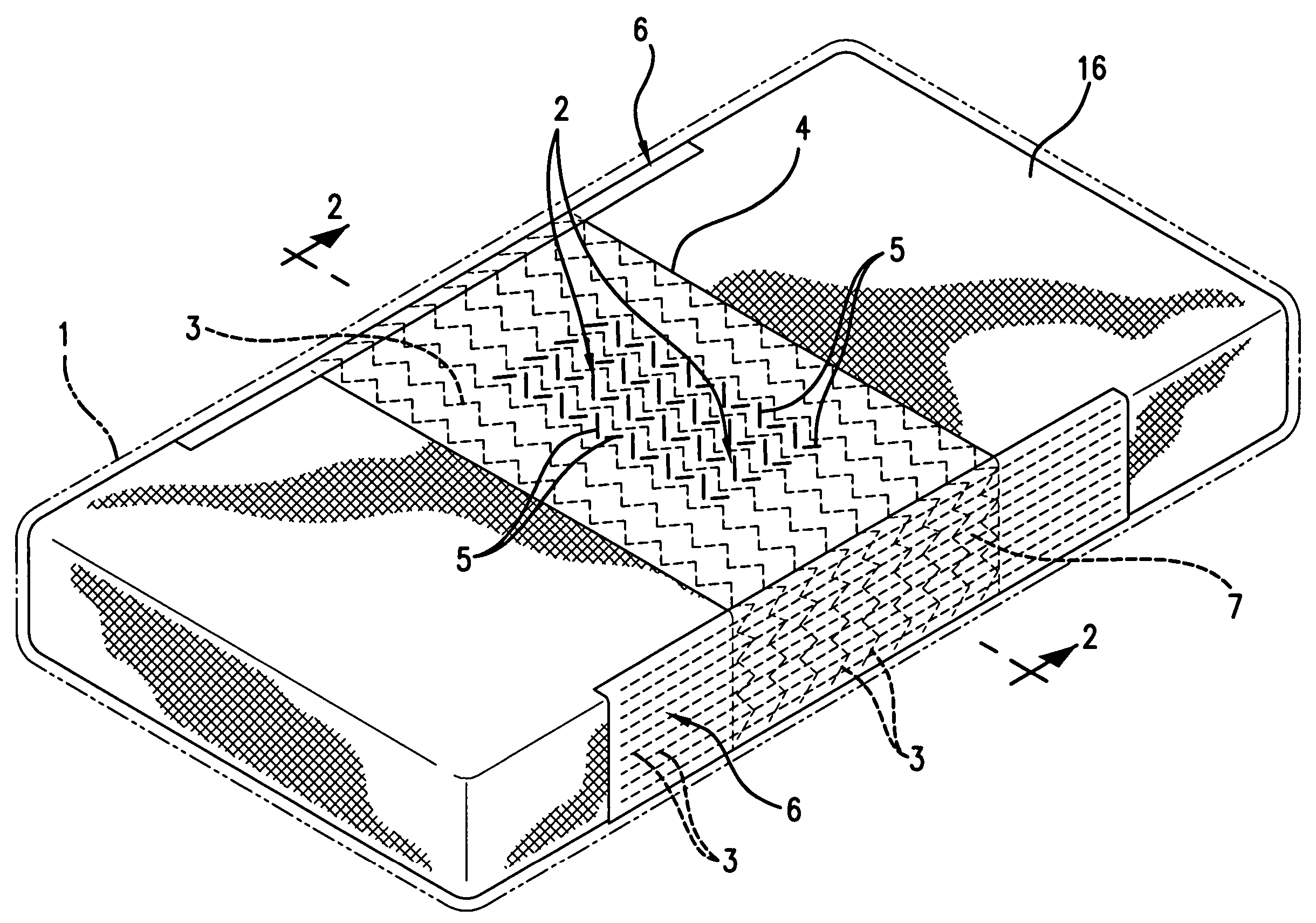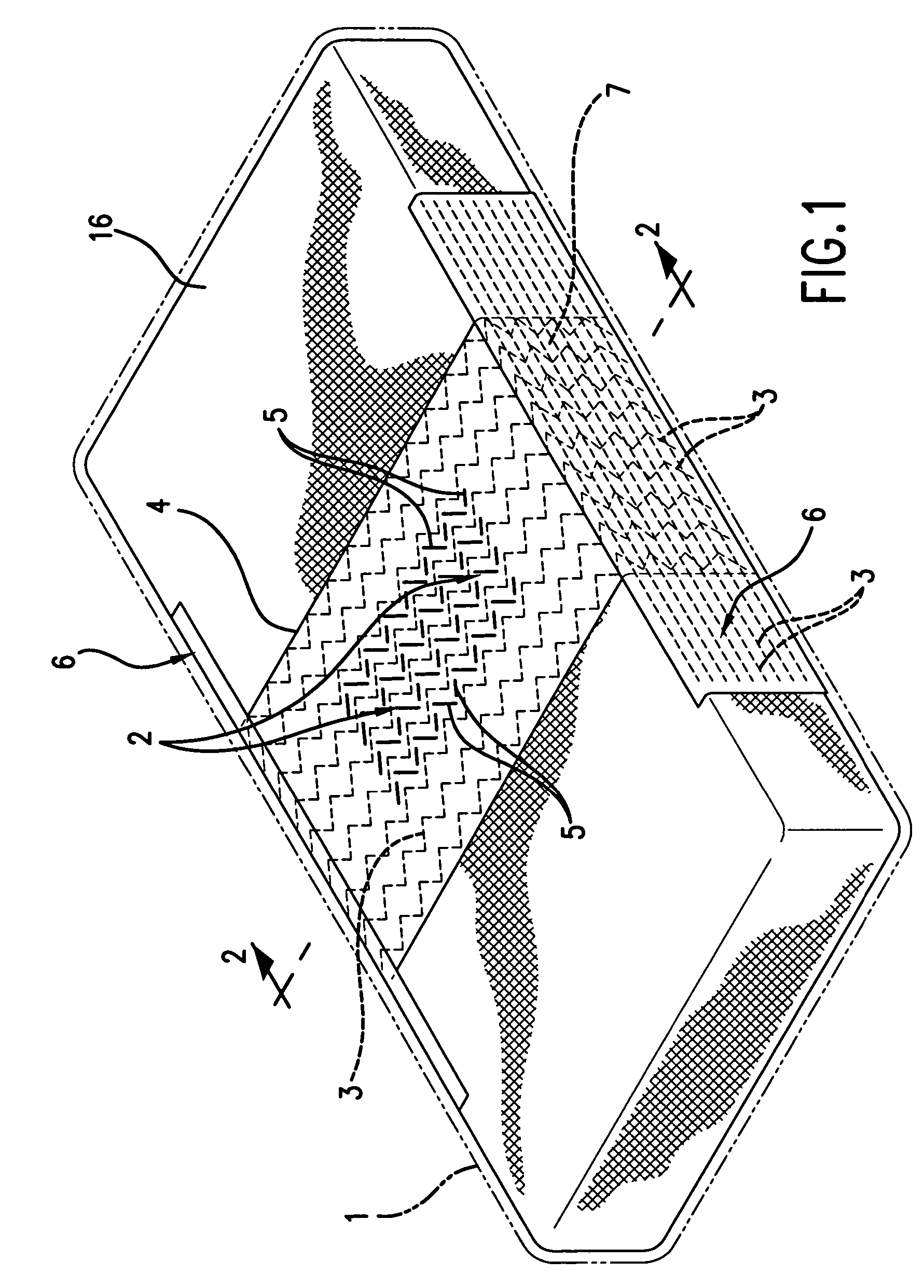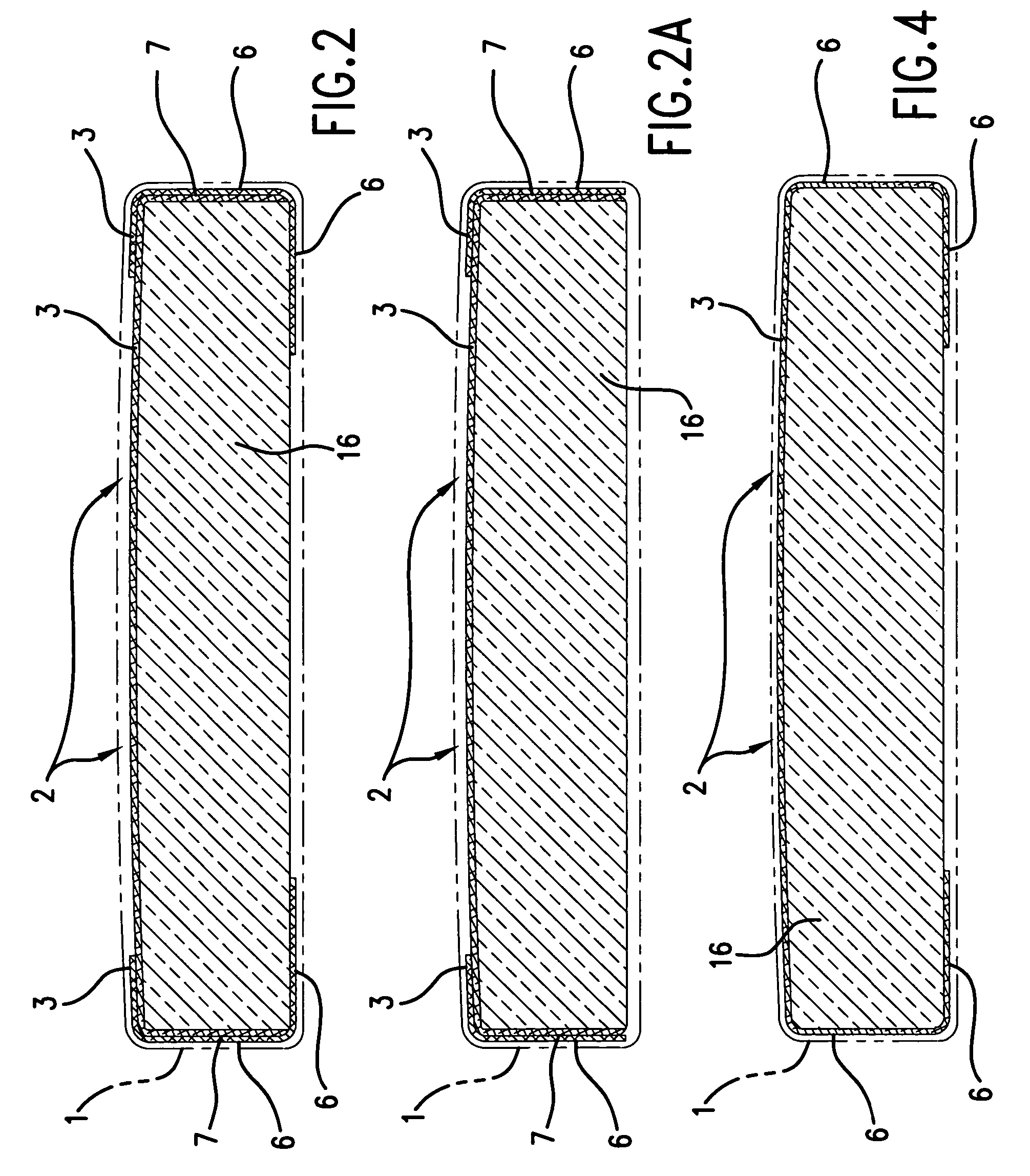Heat wick for skin cooling
a technology of heat wick and skin, which is applied in the field of support surfaces, can solve the problems of pressure ulcers, bedsores, and decubitus ulcers, and their cost precludes the use of caregivers in the vast majority of settings
- Summary
- Abstract
- Description
- Claims
- Application Information
AI Technical Summary
Benefits of technology
Problems solved by technology
Method used
Image
Examples
Embodiment Construction
[0044]FIG. 1 is a perspective view of a mattress with one embodiment of the cooling surface shown in the central position of the mattress 16. The cooling portion may be at any position on the mattress, depending on the portion of the anatomy to be cooled. In the central position shown, the device is positioned to cool the sacral and low back region of the body.
[0045]In this embodiment, the device is positioned beneath the ticking 1. In other embodiments, the device is positioned as an overlay on top of the ticking or other surface.
[0046]Oriented across the mattress in the support region 2 are a series of highly thermally conductive materials 3. These conductive materials may be pitch-based carbon fibers or polymers with thermal conductivities in excess of 40 W / m-K. Although the predominant orientation is across the mattress (i.e., perpendicular to the long axis of the mattress), they have a zig-zag or somewhat sinusoidal or wavy configuration. This geometry allows the support region...
PUM
 Login to View More
Login to View More Abstract
Description
Claims
Application Information
 Login to View More
Login to View More - R&D
- Intellectual Property
- Life Sciences
- Materials
- Tech Scout
- Unparalleled Data Quality
- Higher Quality Content
- 60% Fewer Hallucinations
Browse by: Latest US Patents, China's latest patents, Technical Efficacy Thesaurus, Application Domain, Technology Topic, Popular Technical Reports.
© 2025 PatSnap. All rights reserved.Legal|Privacy policy|Modern Slavery Act Transparency Statement|Sitemap|About US| Contact US: help@patsnap.com



